📋 Content Report
See how many people have viewed or interacted with a specific page or blog post and its attachments.
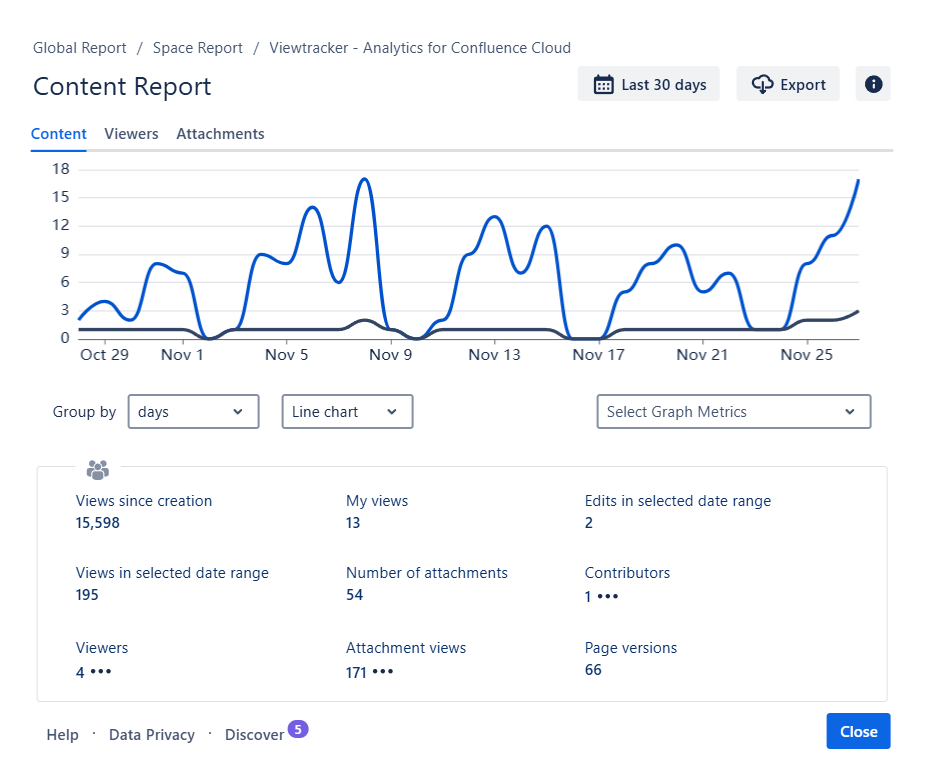
Screenshot of the Content Report
What can the Content Report do?
Select “Content Report” in the page heading to display many page-related metrics and display them in a graph.
Group the metrics in the graph by days (default), weeks, months, or years.
Specify which metrics to display in the graph.
Display the metrics as a line (default), bar or area chart.
Use the breadcrumb to navigate between Content, Space and Global reports (depending on your access permission).
In the tab "Viewers," you can see who viewed the page and how many times (depending on privacy settings).
In the tab “Attachments,” see the number of attachments and attachment views.
Export the desired metrics as a CSV file.
Please note. We will use the term "page" to refer to both pages and blog posts, as all options apply equally to both.
It may take up to 1 minute for recent views to appear in the report.
How to access the Content Report
Navigate to your desired page or blog post.
Click on the "Content Report" icon above the page content.
Alternatively, select "More actions" and select "Content Report.”

Content Report icon
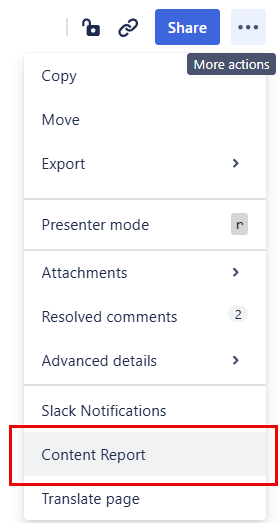
Screenshot: Content Report entry
An overlay "Content Report" will appear. It will be structured in three tabs: Content, Viewers and Attachments.

Entries within the Content Report
We will describe all metrics in the different tabs in detail.
Tab “Content” (Default)
The first tab, "Content," will be selected by default and will contain a graph of the views and edits made to this page over the least 30 days (this value can be changed). Below, you can find a description of its elements.

Screenshot of the Content Report
Elements of the Content Table
The table below the graph contains the following metrics:
Views since creation: The total number of views since the page was created.
Views in selected date range: The number of views in the selected date range.
Please note: If the page was created recently, the numbers of "Views since creation" and "Views in selected date range" will be the same.
Viewers: The number of individual users who have visited this page.
Clicking on the three dots will open the tab “Viewers” and list them (see below).
My views: The number of times you have viewed this page yourself.
Number of attachments: The number of files attached to this page.
Attachment views: Number of times the attachments were viewed or downloaded.
Clicking on the three dots will open the tab “Attachments” and reveal more details (see below).
Edits in selected date range: How many times the page was edited in this period.
Contributors: Number of Confluence users contributing to this page’s content.
Page versions: The number of times a new version of this page was published.
Tab “Viewers”
Depending on your Data Privacy setting, the Content Report will contain the tab "Viewers," which reveals which user has viewed this content, when, and how many times in the selected date range.
The table is sorted by “Last viewed” and displays the number of times each user visited the page and the last time they viewed it.
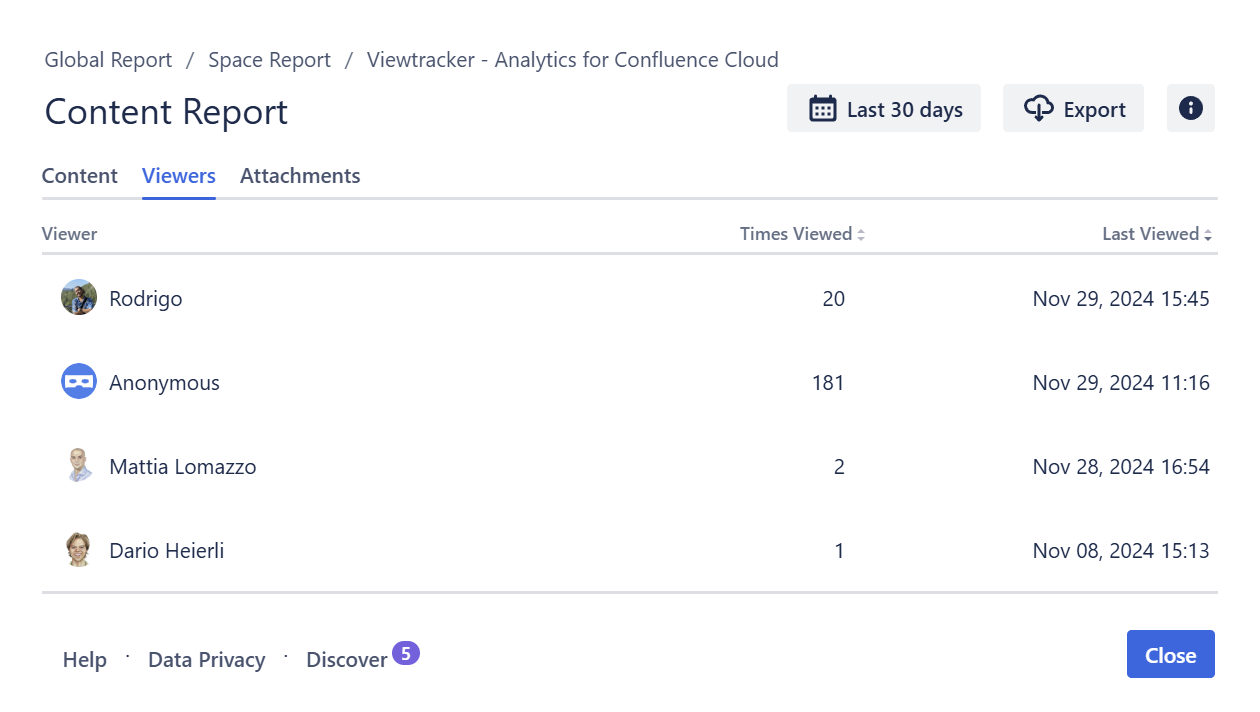
Screenshot of the Content Report; Viewers.
Special Viewers
If your page or blog post is open to the public, you may also see the number of page views by “Anonymous” (external visitors without a Confluence log-in).
If you see "Protected Confluence Users" in the "Viewers" tab, the privacy setting was once set to Extended Privacy Mode.
Tab “Attachments”
This report shows you the attachments on the page. The list depends on which types of attachments the Confluence administrator has chosen to track in the global attachment settings.
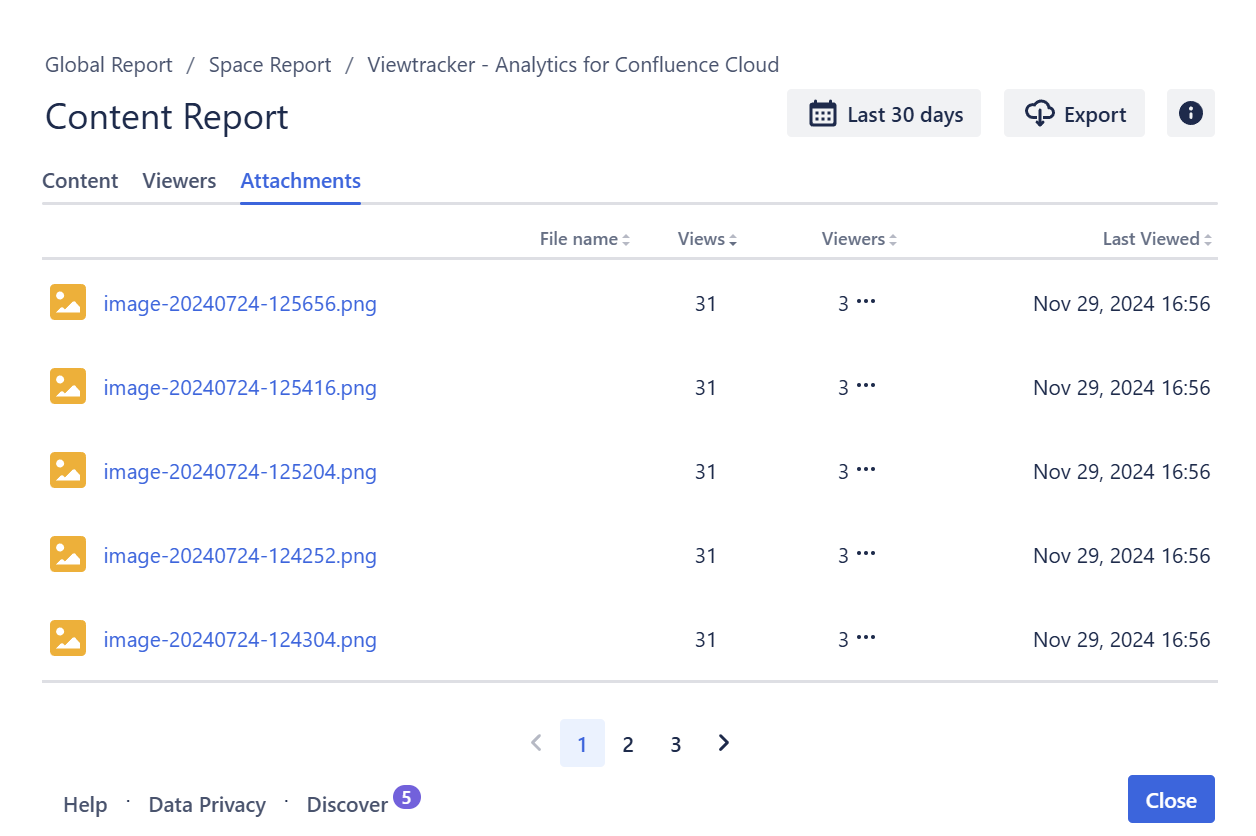
Screenshot of the Content Report; Attachments.
The column “File Name” lists the attachment's name and its file extension.
The column “Views” lists the views this attachment has generated in the selected date range.
The column “Viewers” lists the number of viewers that have viewed or downloaded the attachment.
The three dots next to that number are only displayed if the data privacy allows it.
Clicking these dots will open a dialogue listing this attachment’s viewers.
The column “Last viewed” displays the timestamp of the last attachment view or download.
If the page contains no attachments, this info panel is displayed:
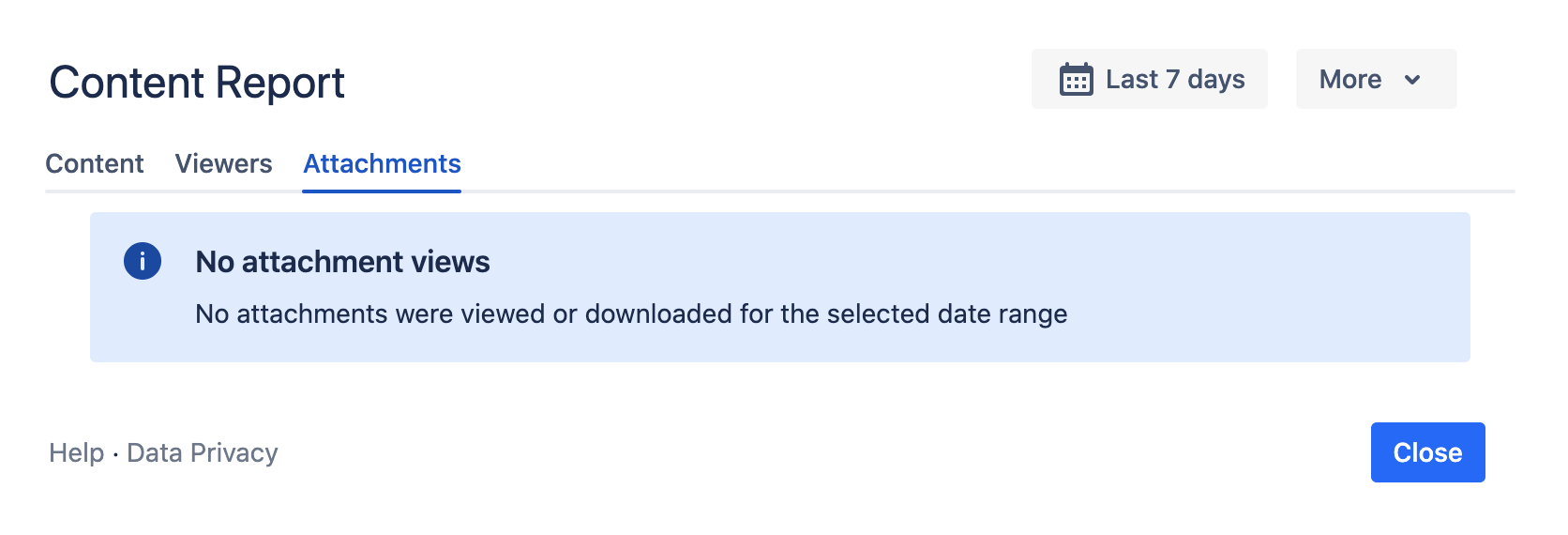
Settings:
As a default, the attachment data from the last 30 days are displayed. You can change that by clicking into the date field and selecting a different date range. All metrics will adapt automatically.
You can group the metrics in the graph by using “Group by” days (default), weeks, months, or years.
You can select the graph metrics “Views” and “Viewers” separately.
Changing the date range and graph type
As a default, the data from the last 30 days are displayed. You can change that by clicking into the date field and selecting a different date range. All metrics will adapt automatically.
You can group the metrics in the graph by using “Group by” days (default), weeks, months, or years.
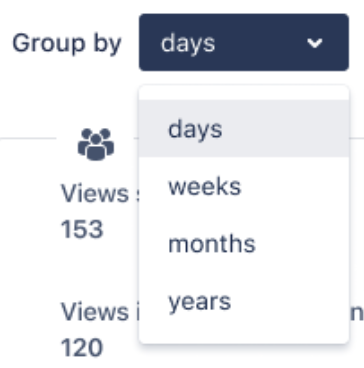
You can display the numbers as a line chart (default), bar chart, or area chart.
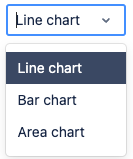
Choosing which metrics to display in the graph
Below the graph, there is a drop-down menu listing the available metrics. By default, “Views”, “Versions” and “Edits” are selected.
Versions are marked by a red vertical line on a specific date. A page may have various versions published on the same date. Versions are displayed as a trend line.
Select the metrics you want to appear in the graph, and the graph will adapt automatically. Viewtracker saves the metric selection; whenever you access the report in the future, the selected metrics will be displayed in the graph.

Navigating to other reports
Use the breadcrumb in the header to access the Global Report or Space Report (depending on your access permission). The Global or Space Report will open as a new tab. The date range and metric grouping selected in one report will automatically be adapted to the other reports.
The entry on the right side of the breadcrumb is the page/blog post name. Tapping the name will open the page in a new tab so you can access its content.

Breadcrumb to other reports
Exporting data
You can export the data in the Content Report at any time. See Export Viewtracker Data for details.
Restricting access to the Content Report
By default, any user with a Confluence login can access the Content Report and Space Report (i.e., anonymous users never have access to Viewtracker reports).
A Confluence administrator or a space administrator can restrict access to the Content Reports. Read here for the complete documentation: Access Permission
For information on the content of a specific space, refer to the Space Report.
